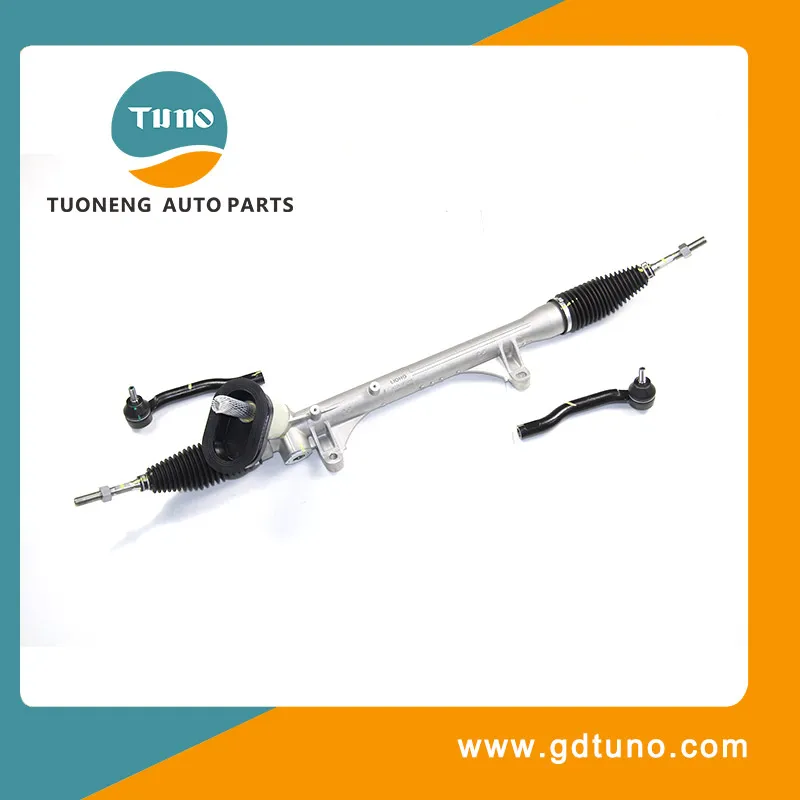Understanding the Automobile Steering System: Components, Types, and Functionality
2024-09-12
The automobile steering system plays a vital role in the control and safety of any vehicle. It allows drivers to guide and direct the car in the desired direction while maintaining balance and maneuverability. In this blog, we’ll explore the components of the steering system, its types, and how it functions to ensure a smooth and responsive driving experience.

Components of a Steering System
A modern automobile steering system consists of several critical components working together to provide precise control over the vehicle’s direction:
1. Steering Wheel: The driver’s interface for controlling the direction of the car. It’s connected to the steering column, which transfers the rotational movement from the steering wheel to the steering mechanism.
2. Steering Column: This is the shaft that connects the steering wheel to the steering gear. It is designed to collapse in the event of an accident to protect the driver.
3. Steering Gearbox: The gearbox converts the rotational motion of the steering wheel into linear motion to turn the wheels. Common types of steering gearboxes include the rack-and-pinion system and the recirculating ball system.
4. Tie Rods: Tie rods connect the steering gearbox to the steering arms on the wheels, transferring the movement from the steering gear to the wheels.
5. Steering Knuckles: These are connected to the wheels and tie rods, pivoting to turn the wheels when the driver rotates the steering wheel.
6. Pitman Arm, Idler Arm, and Drag Link: In certain types of steering systems (e.g., recirculating ball), these components transfer movement from the steering box to the wheels.
Types of Steering Systems
There are primarily two types of steering systems used in modern vehicles: manual steering systems and power steering systems. Power steering systems are further divided into hydraulic, electric, and electro-hydraulic systems.
1. Manual Steering System
In a manual steering system, the driver’s input force is directly transmitted to the wheels through mechanical linkages. This type of system is simple but requires greater effort, especially at lower speeds or when maneuvering heavy vehicles.
2. Power Steering System
Power steering reduces the amount of effort required by the driver to steer the vehicle. There are several subtypes of power steering:
- Hydraulic Power Steering (HPS): Uses hydraulic pressure generated by a pump driven by the engine to assist in turning the wheels. The pump provides a constant flow of hydraulic fluid, which aids in steering.
- Electric Power Steering (EPS): This system replaces the hydraulic pump with an electric motor. Sensors detect the driver’s input, and the motor assists in turning the wheels. EPS is more efficient as it only uses energy when needed.
- Electro-Hydraulic Power Steering (EHPS): A combination of hydraulic and electric systems, where an electric motor drives the hydraulic pump instead of the engine. This system provides more control and energy efficiency.
Working Principle of the Steering System
The steering system's working principle is straightforward: when the driver turns the steering wheel, the steering column and steering gear transfer the rotational motion to the tie rods, which push or pull the steering arms. This movement causes the steering knuckles and wheels to pivot, directing the car in the desired direction.
The Importance of Power-Assisted Steering
In modern vehicles, power-assisted steering has become essential for several reasons:
1. Reduced Effort: Power steering reduces the physical effort required to turn the wheels, especially at low speeds, making the driving experience more comfortable and less fatiguing for drivers.
2. Improved Safety: Power steering improves vehicle control, especially during sharp turns or emergency maneuvers, enhancing overall safety.
3. Precision: With systems like electric power steering, the driver receives immediate feedback, allowing for more precise control, better handling, and quicker response times.
4. Fuel Efficiency: Electric and electro-hydraulic steering systems are more fuel-efficient than hydraulic systems because they consume energy only when steering assistance is required.
Types of Steering Mechanisms
1. Rack-and-Pinion Steering
This is the most common type of steering mechanism in modern vehicles. It consists of a pinion (a small gear attached to the steering shaft) that moves a rack (a toothed bar). As the driver turns the steering wheel, the pinion rotates, moving the rack side to side, which in turn moves the wheels. Rack-and-pinion steering offers precise control and is popular in cars, SUVs, and light trucks.
2. Recirculating Ball Steering
Used primarily in larger vehicles, this system includes a worm gear inside the steering gearbox. As the driver turns the steering wheel, a shaft with threads rotates, moving a set of ball bearings inside the gearbox that convert rotational motion into lateral motion. This system is durable and can handle heavy loads, making it common in trucks and off-road vehicles.
Common Issues with Steering Systems
Over time, steering systems can experience wear and tear, leading to issues that affect vehicle performance. Some common problems include:
- Steering Wheel Vibration: This can be caused by unbalanced tires, worn-out tie rods, or misaligned wheels.
- Loose Steering: This may be due to worn steering gear or linkage components, resulting in reduced responsiveness.
- Hard Steering: If power steering fluid is low or the power steering pump is faulty, it may become difficult to turn the steering wheel.
- Steering Pulls to One Side: This issue is usually caused by improper wheel alignment or uneven tire pressure.
Conclusion
The automobile steering system is a fundamental component of vehicle control and safety, enabling drivers to navigate smoothly and accurately. With advancements in technology, modern steering systems like electric power steering have enhanced precision, comfort, and efficiency. Proper maintenance of the steering system is crucial for ensuring a vehicle’s long-term performance, safety, and drivability.


